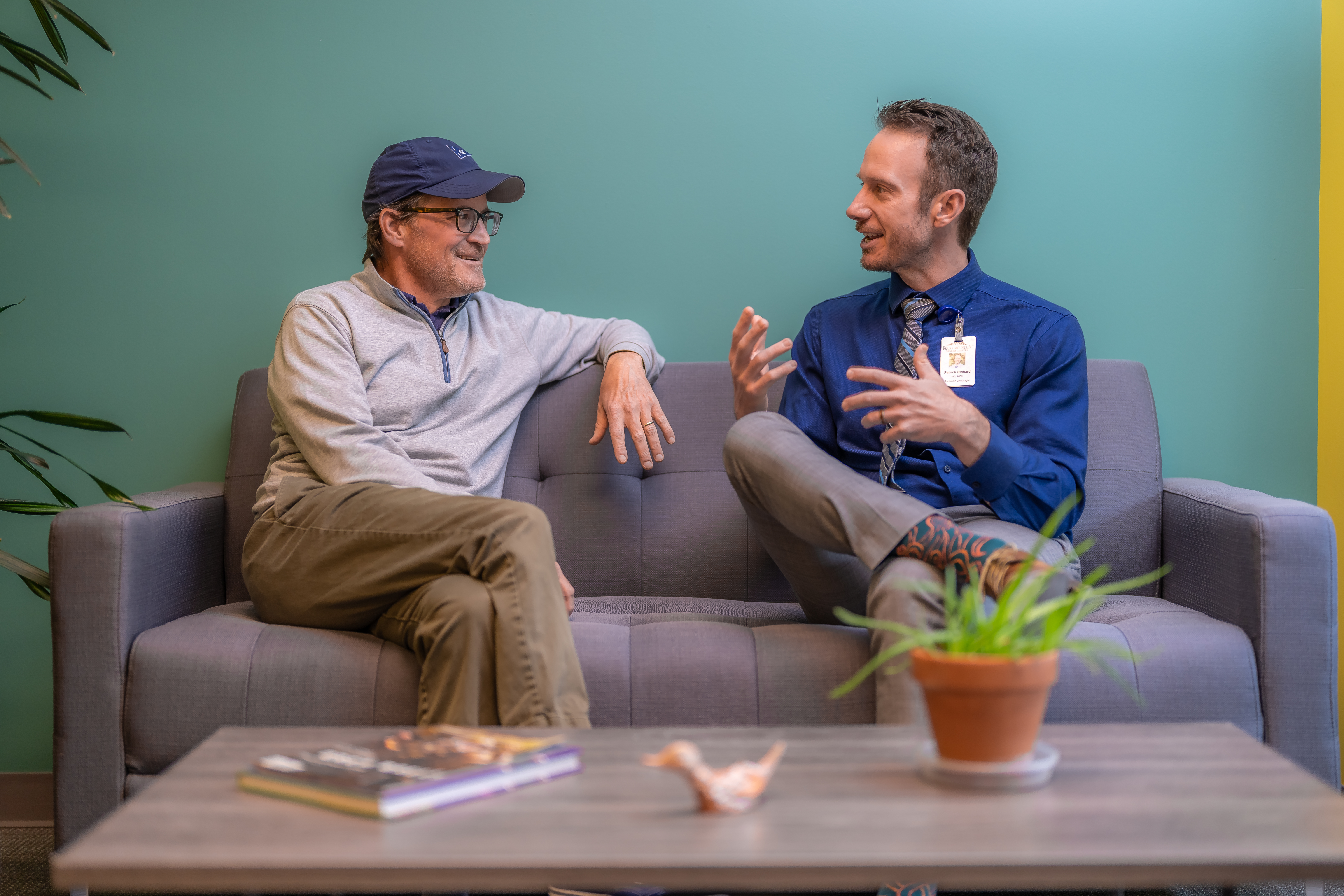The medical oncologists and hematologists at Rocky Mountain Cancer Centers (RMCC) may determine that chemotherapy should be a part of a patient’s cancer treatment plan. Chemotherapy has been around since the 1950s and it remains one of the most effective treatments for many types of cancer. The more you know about the treatment, including the different chemotherapy types, how chemotherapy works, and what to expect, the better prepared you will be to undergo chemotherapy treatment.
Chemotherapy is used to treat cancer by stopping or slowing the growth of cancer cells. Non-cancerous cells grow and die in a controlled way. Cancer occurs when abnormal cells divide and multiply rapidly creating more abnormal, or cancerous, cells in the body. There are often side effects when a patient receives chemotherapy because the treatment also slows the growth of healthy cells. Non-cancerous cells typically repair themselves after chemotherapy.
The type of chemotherapy a patient receives depends on a number of factors, such as: the type of cancer that was diagnosed, where the cancer is located in the body and other patient specific factors. Your cancer care specialists will develop a recommended treatment plan personalized just for you.
In some cases, chemotherapy alone is enough to rid the body of cancer, but it’s more commonly used in conjunction with other treatments, such as radiation or surgery. It all depends on the size and type of your cancer.
How Does Chemotherapy Work?
To understand how chemotherapy works, it’s important to first understand cancer cells. Cancer cells are abnormal cells that grow and divide at a rapid rate, destroying surrounding normal cells and tissue.
Cancer doctors who specialize in this form of therapy — called medical oncologists — will develop a treatment plan that includes one or more types of chemotherapy drugs, or cytostatics. Cytostatics work by attacking the DNA of fast-growing cells to kill them or prevent them from dividing. Cytostatics, however, cannot distinguish between fast-growing cancer cells and other fast-growing normal cells so it will attack both. Some fast-growing normal cells include blood cells, cells that line the mouth, and cells that cause hair to grow. Because chemotherapy can attack those normal cells, it can cause unwanted side effects, including fatigue, nausea, and hair loss.
Types of Chemotherapies
There are more than 100 chemotherapy drugs on the market today are designed to attack cancer cells, but they don’t all work the same way. Some attack the DNA within the cells to kill them off, while others cut off blood supply to the cells to keep them from growing and dividing. Because cancer cells are adaptable and can learn to go around these drugs, more than one chemotherapy drug may be prescribed at a time or drugs are prescribed in succession to maximize their effects on cancer cells. Different types of chemotherapy are used to:
- Rid the body of cancerous cells
- Slow a cancer’s growth and keep it from spreading
- Reduce the chances cancer will return
- Kill cancer cells that have metastasized, or spread to other parts of the body
- Ease cancer symptoms
Chemotherapy drugs are traditionally and most commonly given intravenously (into a patient’s veins) in a clinical setting. Various forms of oral chemotherapy, however, which can be self-administered at home by taking a pill, are available depending upon cancer type. Your healthcare provider will discuss if this is an option for you. If you are prescribed oral chemotherapy, Rocky Mountain Cancer Centers provides in-house dispensing of oral chemotherapy drugs, meaning you don’t have to travel to a pharmacy to get your prescription filled.
Specialized forms of chemotherapy have been developed to target specific types of cancers. Learn more about specialized chemotherapy for breast cancer, lung cancer, and colorectal cancer.
